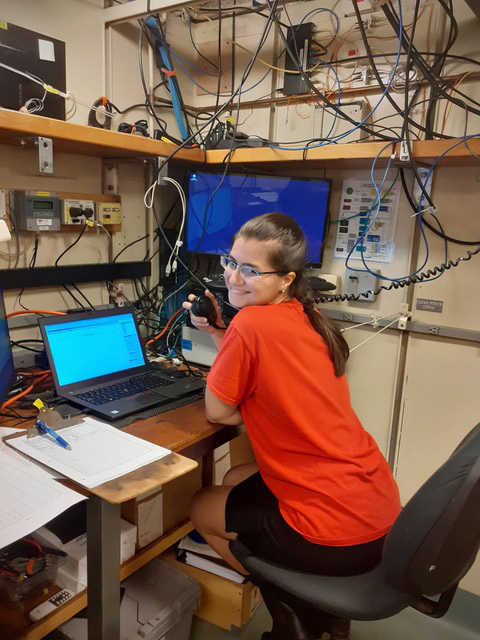Paper in press: Insights into iodine cycling in the Subtropics
I’m delighted to announce the publication of a study, led by Iulia Streanga, examining iodine cycling in the subtropical North Pacific Ocean. Our study aimed to uncover the dynamics of iodine redox transformations in seawater, particularly the conversion between its oxidized and reduced inorganic forms, and shed light on the rates at which these transformations occur. This effort holds significant interest as iodine speciation forms the foundation of an important paleoredox proxy.
We approached this task in three ways. First, we generated high-precision profiles of inorganic iodine speciation in the top 1,000 m of the water column at Station ALOHA using isotope dilution, ion-exchange chromatography, and analysis by inductively coupled plasma mass spectrometry. Our profiles are consistent with those shown in the classic study by Campos et al. (1996), though our high-precision method can resolve much smaller changes in iodine abundance. Our profiles show an approximate 8 % deficit in surface inorganic iodine concentrations in the Subtropical North Pacific Ocean. Rather than being a consequence of iodine loss, we hypothesized that this deficit resulted from the presence of dissolved organic iodine, which is not resolved by the isotope dilution method.
To test this hypothesis, we investigated whether dissolved organic iodine was present in the open ocean by subjecting seawater samples to solid-phase extraction. After processing large volumes of seawater, we analyzed the extracts and confirmed that there is indeed a significant reservoir of dissolved organic iodine in the open ocean, which displays increased complexity and abundance towards the surface.
In the third part of our study, we examined the rates of iodine redox transformations in shipboard incubations. Introducing iodine-129, a long-lived radioisotope, in its reduced form, iodide, into our seawater samples, we tracked its transformation into iodate. Surprisingly, no formation of iodate-129 occurred. However, we saw rapid generation of iodate-127, suggesting oxidation of an intermediate, such as dissolved organic iodine or hypoiodous acid. Using a matrix experiment, we showed that oxidation of intermediates is mediated by particles, but is independent of light levels.
We’re really excited about this study for several reasons: It confirms the existence of dissolved organic iodine in open ocean seawater; it shows that intermediates, such as dissolved organic iodine, play a major role in the conversion of iodine between its inorganic forms; and, it points towards a possible mechanism of oxidation. We invite you to check out the study (open access), which appears in a special issue of Frontiers in Marine Sciences that is focused on understanding the Marine Iodine Cycle: Past, Present, and Future.
Full citation: Streanga, I.-M., D.J. Repeta, J. Blusztajn, and T.J. Horner (2024). Speciation and cycling of iodine in the Subtropical North Pacific Ocean. Frontiers in Marine Science, 10, 1272968, doi:10.3389/fmars.2023.1272968.

Iulia directing the CTD operator during KM2112
